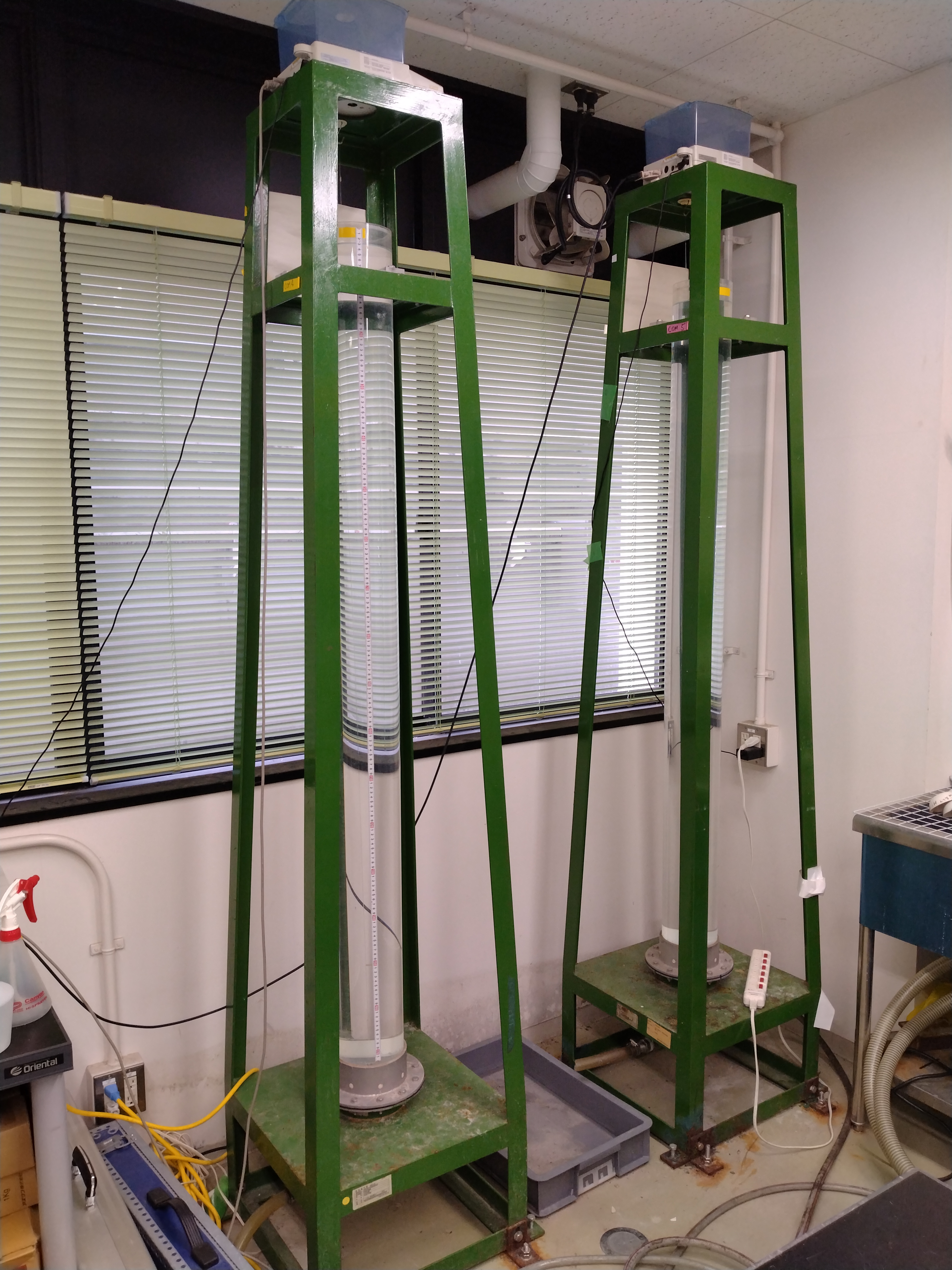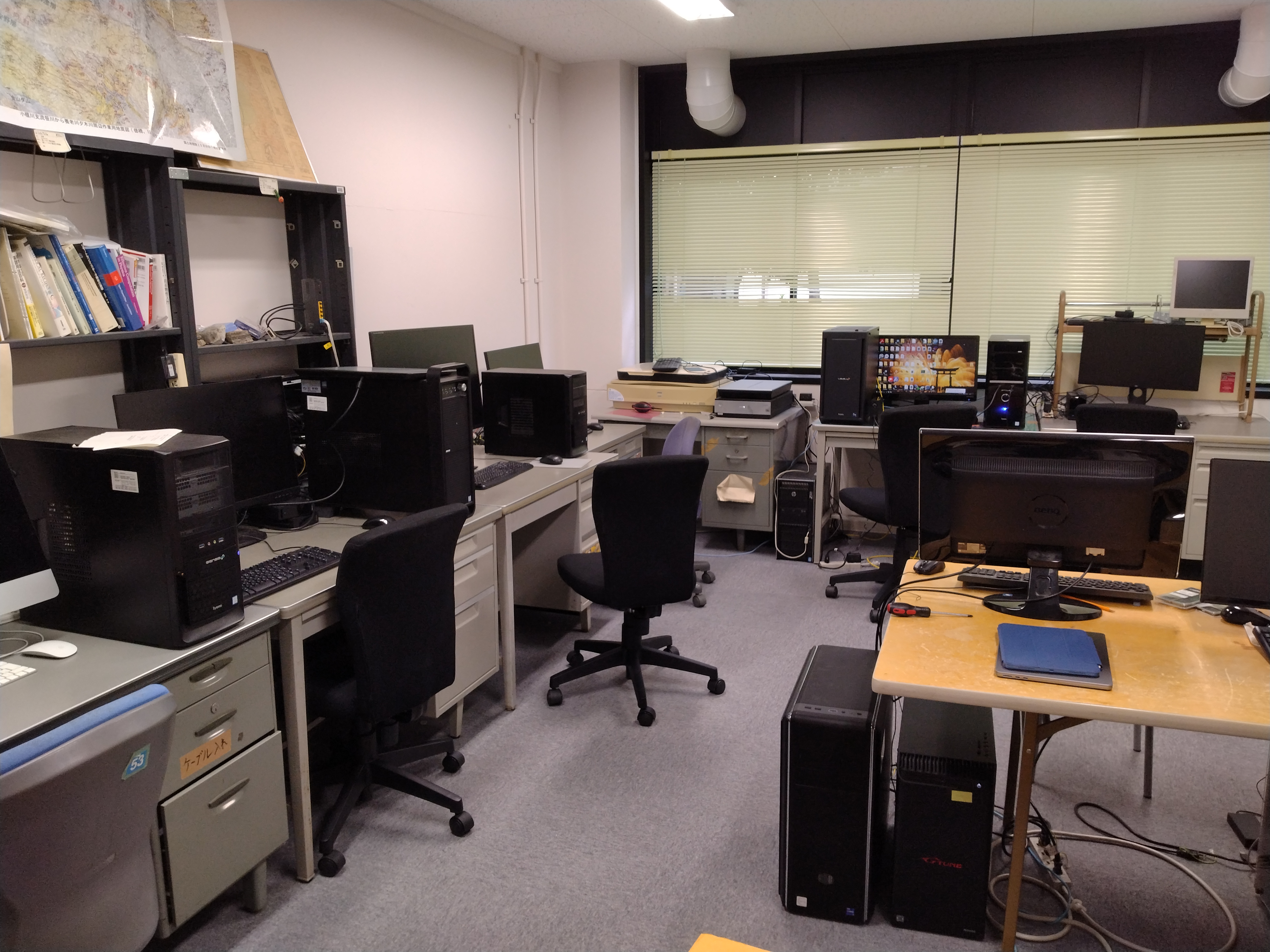SEDIMENTOLOGY Lab.
Kyoto UniversityFacility
堆積学研究室に関連する施設・設備を紹介します。
We introduce the facilities and equipment related to the Sedimentology Laboratory.
Experimental tank and flume
幅2m,奥行5mの大規模な実験用水槽を備えています.
海底で発生する土石流や混濁流は,いつ発生するか予測することが難しく,
直接観測することが困難です.
そのため,流れの振る舞いやそれによって形成される地形を観察するために水槽実験を行います.
海底地形やベッドフォームの形成条件の解明,混濁流の振る舞いに関する研究を行っています.
We have a large experimental water tank measuring 2 meters in width and 5 meters in depth.
Submarine debris flows and turbidity currents are difficult to predict and directly observe
due to their unpredictable occurrence.
Therefore, we conduct tank experiments to observe the behavior of these flows and
the topography they form.
Our research focuses on elucidating the formation conditions of seafloor topography and
bedforms, as well as studying the behavior of turbidity currents.

Grain size analyzer
沈降管は堆積物粒子の粒径を測定することができます.
堆積物の粒径は非常に重要な情報の1つであり,粒径の鉛直・水平方向の変化から,
当時の堆積環境の推定や堆積物を形成した流れの特徴を知ることが可能です.
沈降管による粒度分析は堆積物の粒度分析手法の1つであり,
同一粒径の粒子は同じ沈降速度で沈降するという特徴に基づいて粒径を測定します.
これにより,粒径ごとの重量頻度を得ることができます.
The settling tube allows for the measurement of sediment grain size.
Grain size is one of the most important pieces of information,
as variations in grain size
can help estimate the depositional environment at the time and reveal
the flow conditions.
Grain size analysis using a settling tube is one of the methods for
sediment grain size analysis and is based on the principle that
particles of the same size settle at the same velocity.
This method enables the determination of the weight frequency distribution
for each grain size class.

Scanning Electron Microscope, SEM
走査型電子顕微鏡は波長の短い電子線を利用して,
ナノスケールの微細な凹凸や元素組成差を観察することができます.
EPMAやEDSを用いることで岩石や火山灰の元素マッピングや定量分析が可能です.
火山灰の給源火山の同定や鉱物種同定に用いています.
The scanning electron microscope (SEM) uses short-wavelength electron
beams to observe nanoscale surface textures and elemental composition differences.
By using EPMA and EDS, elemental mapping and quantitative analysis of
rocks and volcanic ash can be performed.
These techniques are used for identifying source volcanoes of volcanic
ash and determining mineral composition.

Computers
LINUXやWindowsの演算用のPCを10台揃えています.
堆積学研究室では,数値計算や機械学習を用いて,
流体の挙動や堆積構造、河川の発達に関する研究を行っています.
特に,野外での露頭調査と数値計算や機械学習を組み合わせた研究が多く,
これは堆積学研究室の研究の特色の一つとなっています.
必要に応じてスーパーコンピュータを活用して研究を進めることもできます.
We have ten computational PCs equipped with Linux and Windows operating systems.
We conduct research on fluid dynamics, sedimentary structures,
and river evolution using numerical calculations and machine learning.
A distinctive feature of our research is the integration of field outcrop
surveys with numerical simulations and machine learning.
When necessary, we also utilize supercomputers to advance our research.
